Bean to Bar with Athens' own Chef Peter Dale
A Tale of Family, Culture, and Connections to our Food
Tribute to Peter
Last week, I attended an OLLI class—a tour of Condor Chocolate in downtown Athens, Georgia, where I reside. The tour description stated it would be guided by Peter, who co-owns the business with his sibling Nick, and would include many samples of cacao, chocolate, and information about how chocolate is made.
It’s not a stretch to think that many or most people on the tour were there for the chocolate-tasting part. However, I was there for Peter. I wanted to spend time with him to learn more about what makes him tick and to examine this new culinary venture.
I first met Peter through The National, an Athens restaurant he co-owns with Erin Wilson and two couples. The National is now majority female-owned. I have long enjoyed its farm-fresh, seasonal food, Mediterranean flair, and casual atmosphere. I respect Peter’s support of the arts, the Boybutante Aids Foundation, and his overall generosity of spirit. He partners with other Athens establishments, such as Cine of the Athens Art Institute and Winter Wonderlights at the Botanical Gardens. Peter was the first chef to purchase meat and eggs from my fledgling farm in 2012. I enjoyed meeting the sous chefs and felt welcomed when delivering my offerings.
Peter now owns or co-owns several establishments, including Maepole and Seabear Oyster Bar, in addition to The National and Condor Chocolate. I felt honored that he took time from his busy life to teach an OLLI class.
I once attended a talk Peter gave about his background. As I recall, his parents met in Ecuador, where his mother lived. His father was visiting for the Peace Corps. They met by chance on a bus, and that changed everything. It was a romantic telling. Peter’s dad became an essential scientific researcher at the UGA poultry research facility. Nick and Peter were born in Athens and have stayed here. However, they pay homage to their mother’s heritage by supporting small farmers and cooperatives in Ecuador. I love these family connections.
Bean to Bar Chocolate
Nacional—An Heirloom Gem
The story of chocolate begins with a bean—a large one. The cacao bean variety used to produce Condor Chocolate is a story in and of itself. It is called Nacional and is a rare heirloom variety that faced near extinction in the 21st century. I love the conservation of genetics in our food system and ecosystems, so this revelation drew me in. Heirloom plants, heritage animals, and native plants must have patrons and conservators to save them for future generations. Since 2013, my passion has been writing about the need for conservation, personally raising heritage livestock and heirloom produce, and documenting the stories of other conservators. I’ve written a book and many articles on these subjects. Disease and cross-breeding are two factors that contribute to the near demise of this Criollo variety of cacao. Ecuador has taken action to prevent the cross-breeding of this treasured variety. We are privileged to support these efforts here in Athens.
When I farmed, I strived to use eco-farming to produce the highest quality, nutrient-dense food possible; the farmers supported by Peter and Nick’s businesses practice regenerative agroforestry. Peter explained that the farmers utilize centuries-old methods instead of cutting down a forest and planting monoculture cacao farms. In contrast, the forests are maintained and new cacao trees are planted among established forests. Banana stands may or may not be nearby, as well. With this method, CO2 is preserved, the cacao is more productive, and the farmer has income from multiple crops. The forest ecosystem is preserved, protecting biodiversity in the soil and the native flora and fauna. The result is regenerative cacao.
Inside each 8-9 inch bean pod are found thirty-some smaller beans, each covered with a milky substance. Peter called the beans baba. I found the outside to be tangy and delicious. The texture when chewing the bean is exciting, and the taste is nutty. Peter warned they were too bitter to eat, but that was not my personal experience. After eating four of these, I found that the caffeine was too much for me. I had trouble sleeping that night. However, I’ve been eating two beans each morning and skipping coffee. Cacao is high in magnesium, iron, flavonoids, and antioxidants. The health benefits are detailed here. I am interested in the improvements in blood circulation and potential anti-inflammatory properties of cacao. My diet now does not include sugar, so I allow myself no more than one ounce of 95% chocolate such as Tazo once a month or every other month.
Roasting
After hand-sorting the beans, the roasting ensues to remove undeveloped beans, broken beans, stones, or sticks. Nick found a century-old coffee roaster he restored to roast the cacao beans. Roasting develops flavor and reduces any bitterness. Roasting takes about 25 minutes at 250 degrees Fahrenheit. Roasting cacao smells like brownies!
Winnowing
Winnowing is the process of removing the skin from the beans to avoid any unpleasant taste. The beans are cracked and sorted by size before being put into a vacuum to remove the light-weight skins.
Testing Flavors
Each batch is tested for flavor notes. There are seven primary flavor profiles in chocolate. Peter stated that Ecuadorian cacao yields citrus (fruity) or nutty profiles. Condor uses nutty profiles for milk chocolate and citrus for dark chocolate.
Grinding
Chocolate solidifies at room temperature and is stored to develop flavor. Cocoa butter may be added to chocolate to improve mouth feel if the fat content is too low.
Tempering
Choco Pronto
In addition to the delicious varieties of chocolate produced in-house, coffee beverages are served using co-owner Nick’s Choco Pronto brand, using Ecuadorian beans.
The tour was a delight! It was great hearing about the impressive work that Peter and Nick are doing. I learned so much about chocolate making and Ecuador. Thank you for reading! Please let me know your thoughts by commenting, sharing, subscribing, or all of the above.



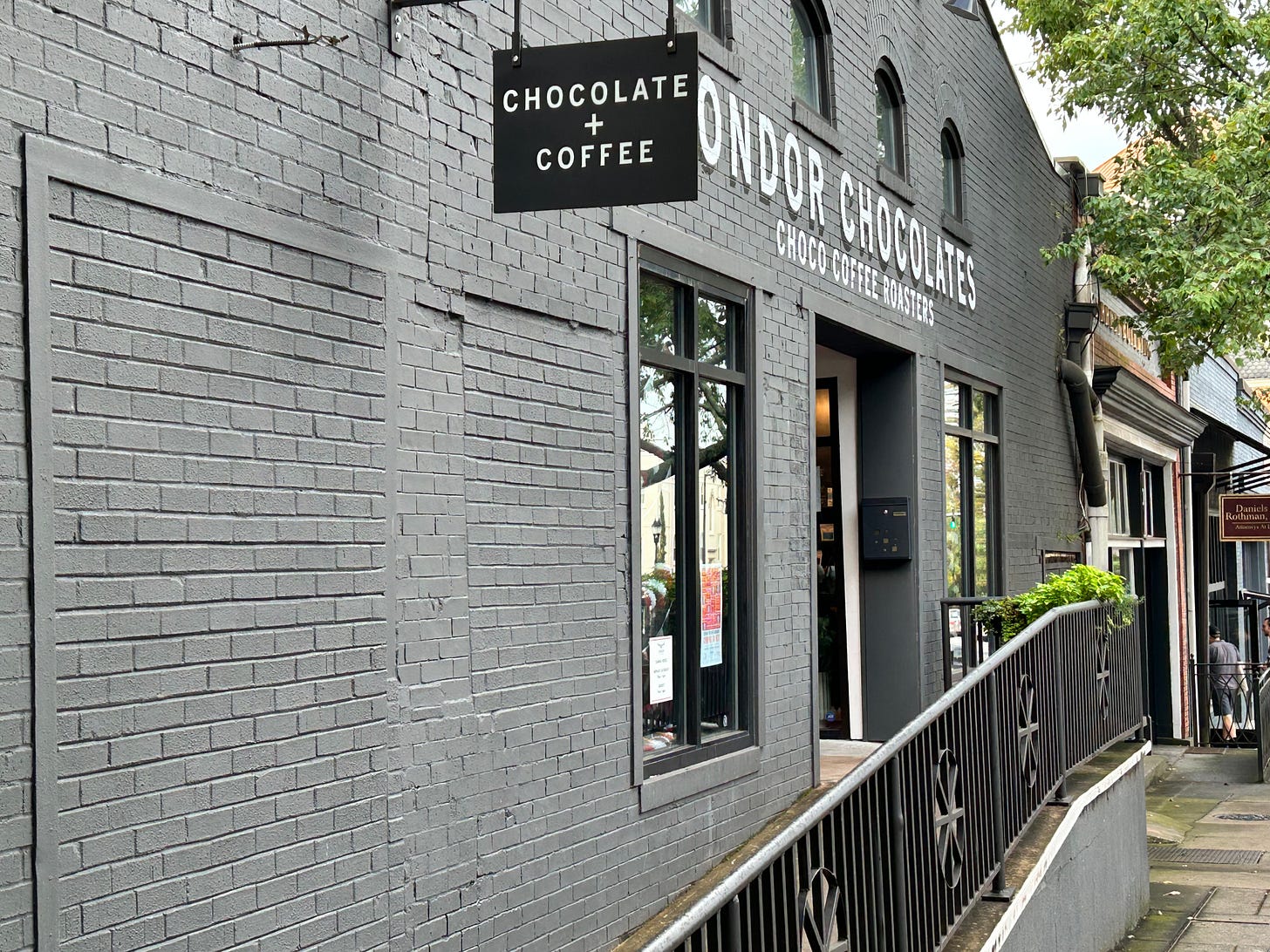
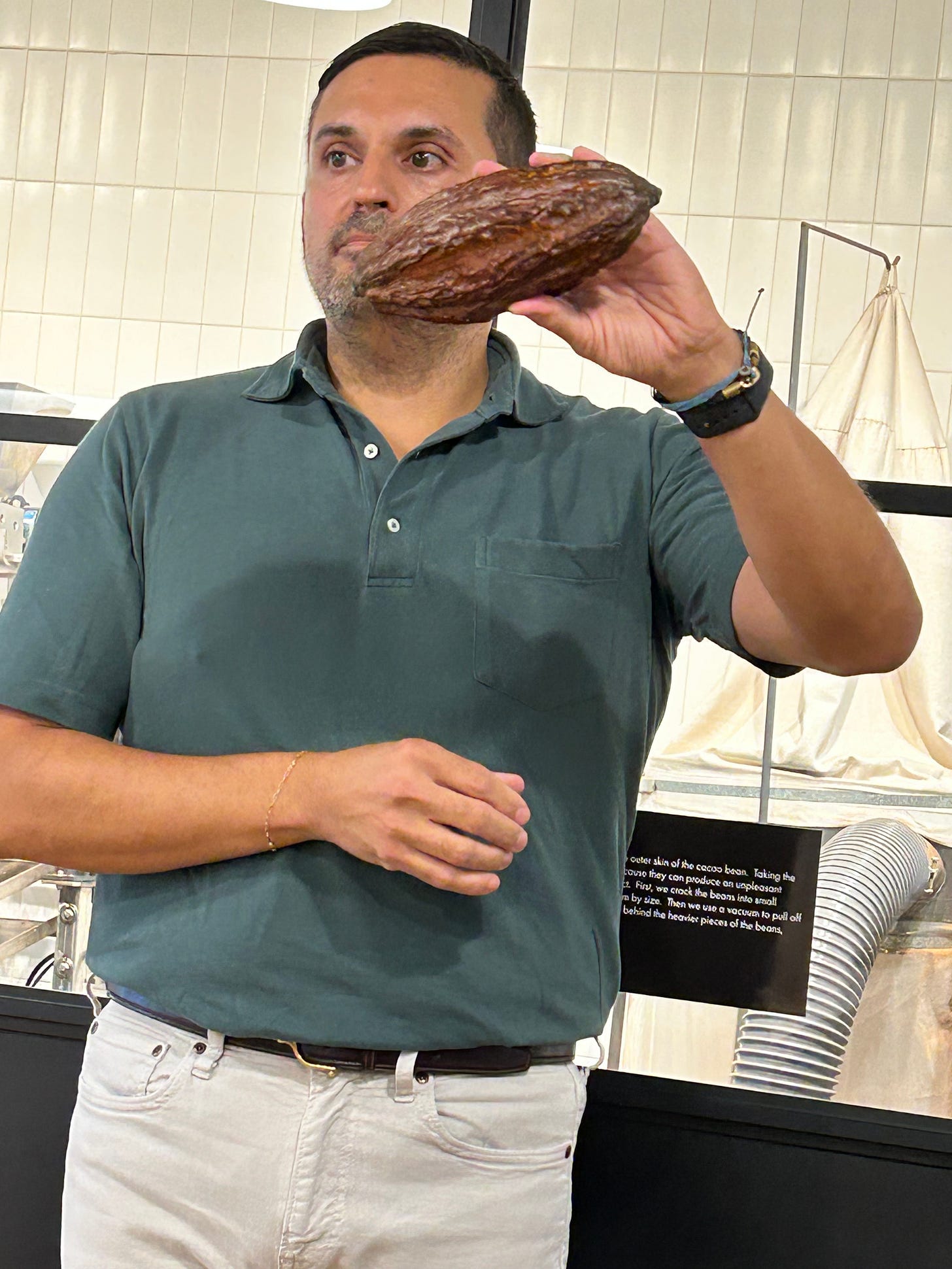
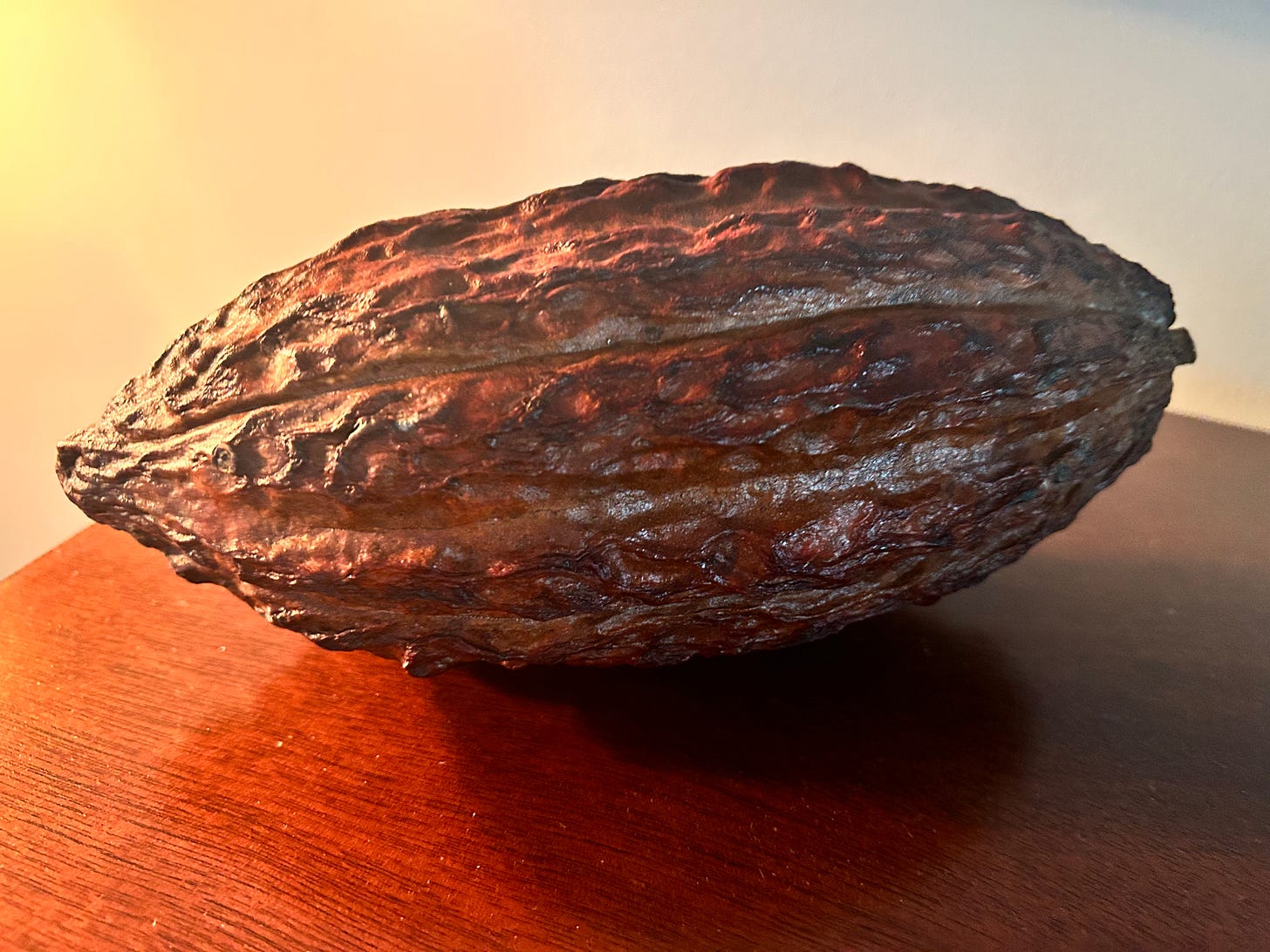

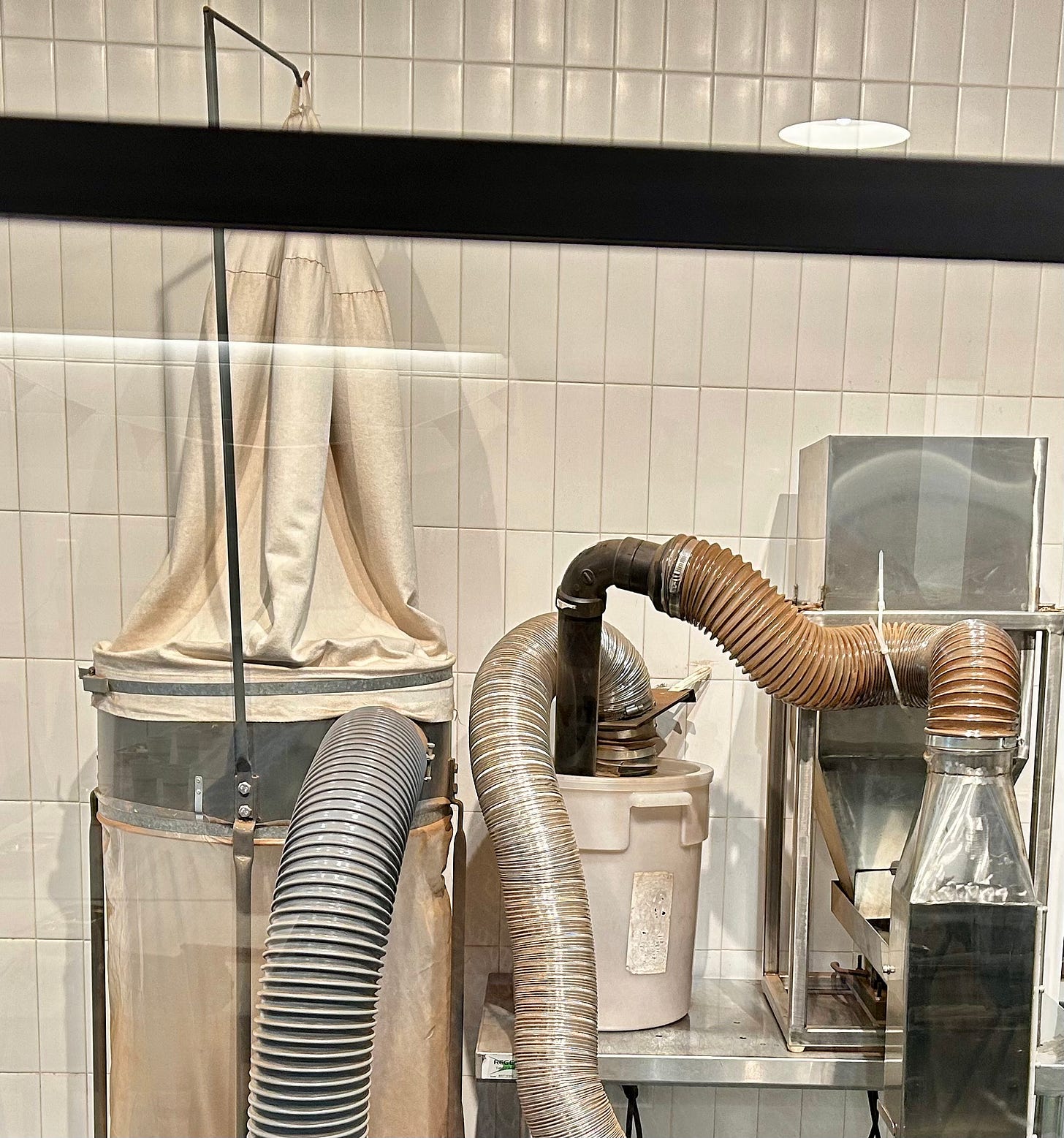
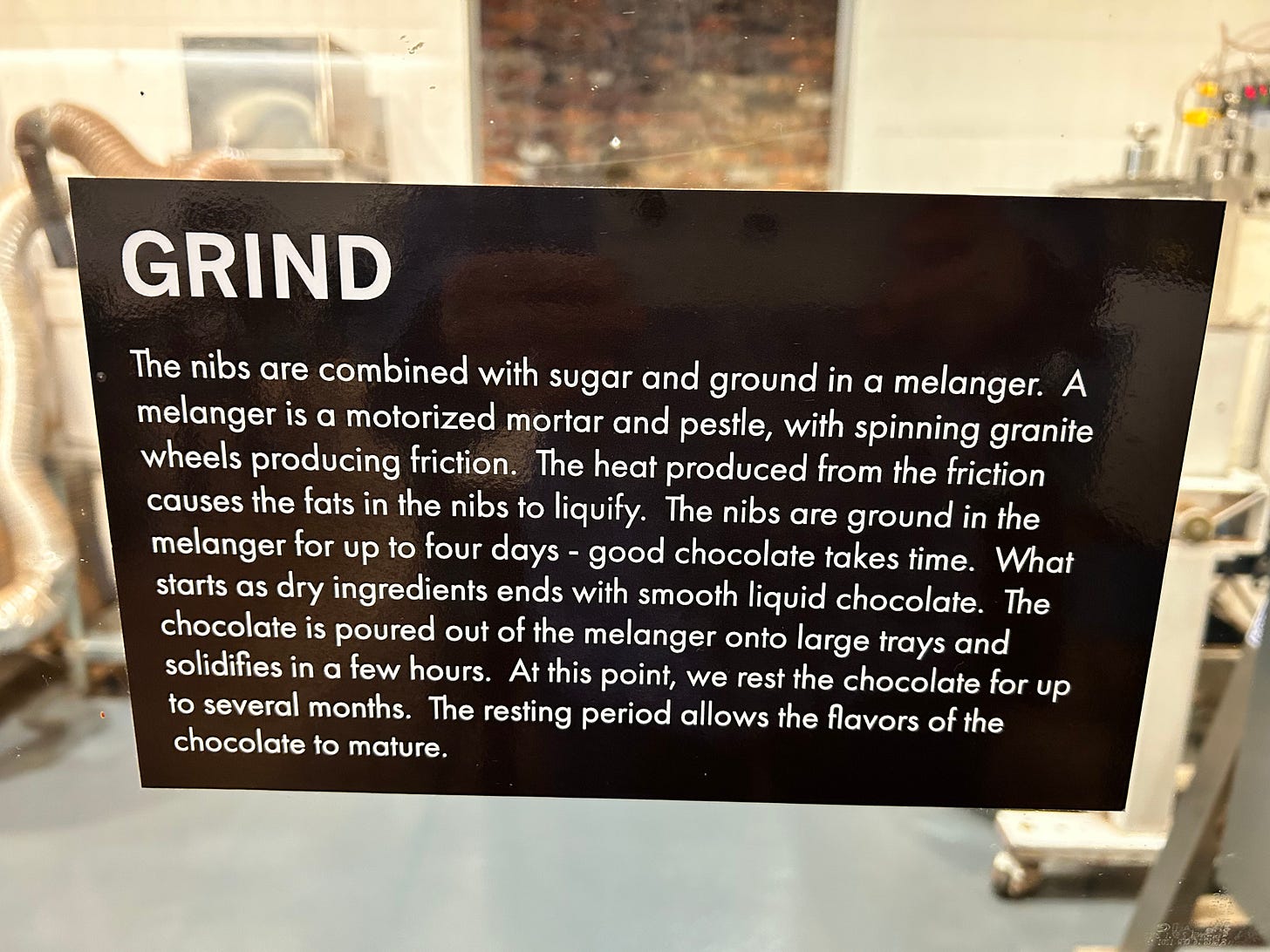

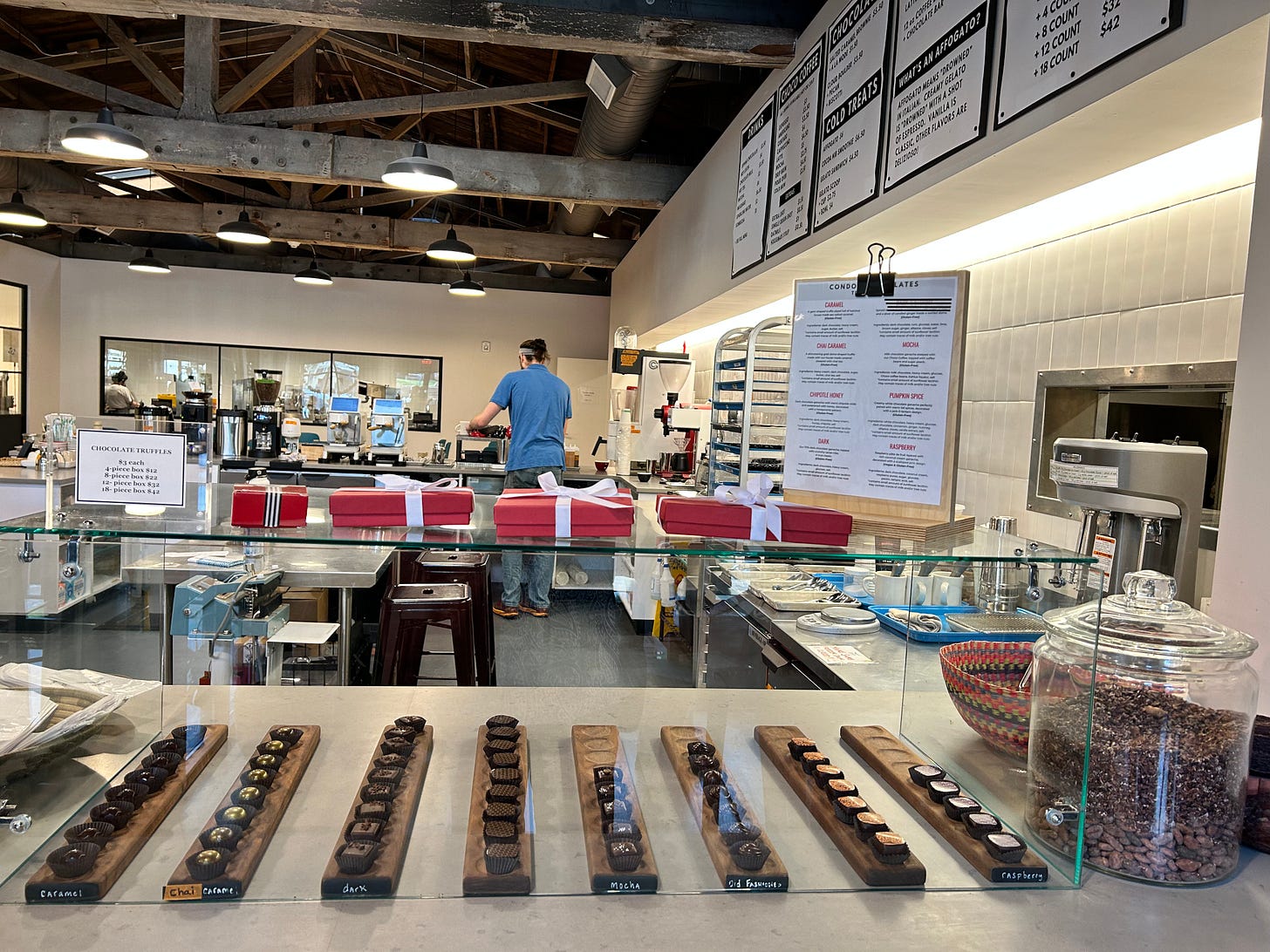
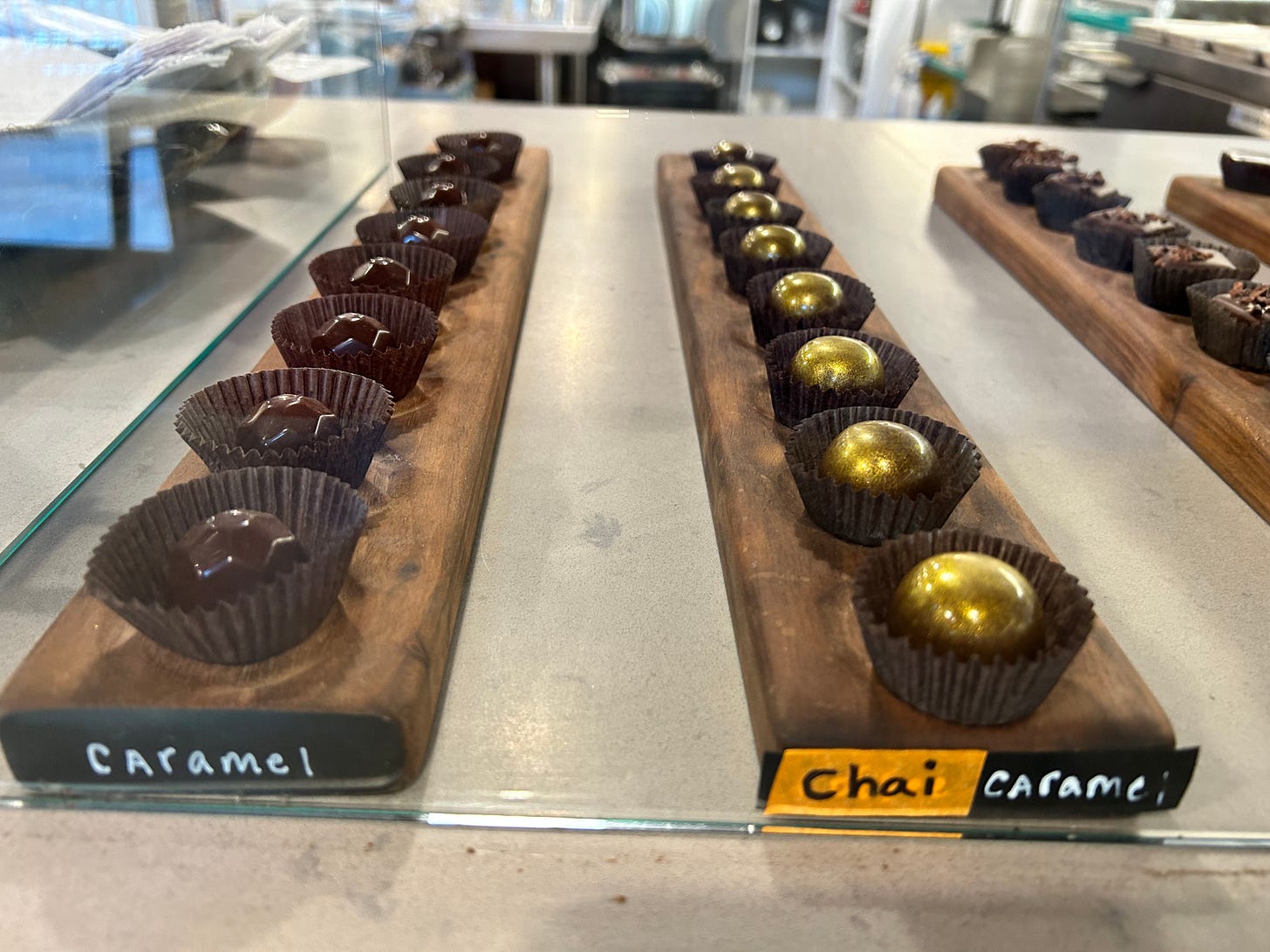
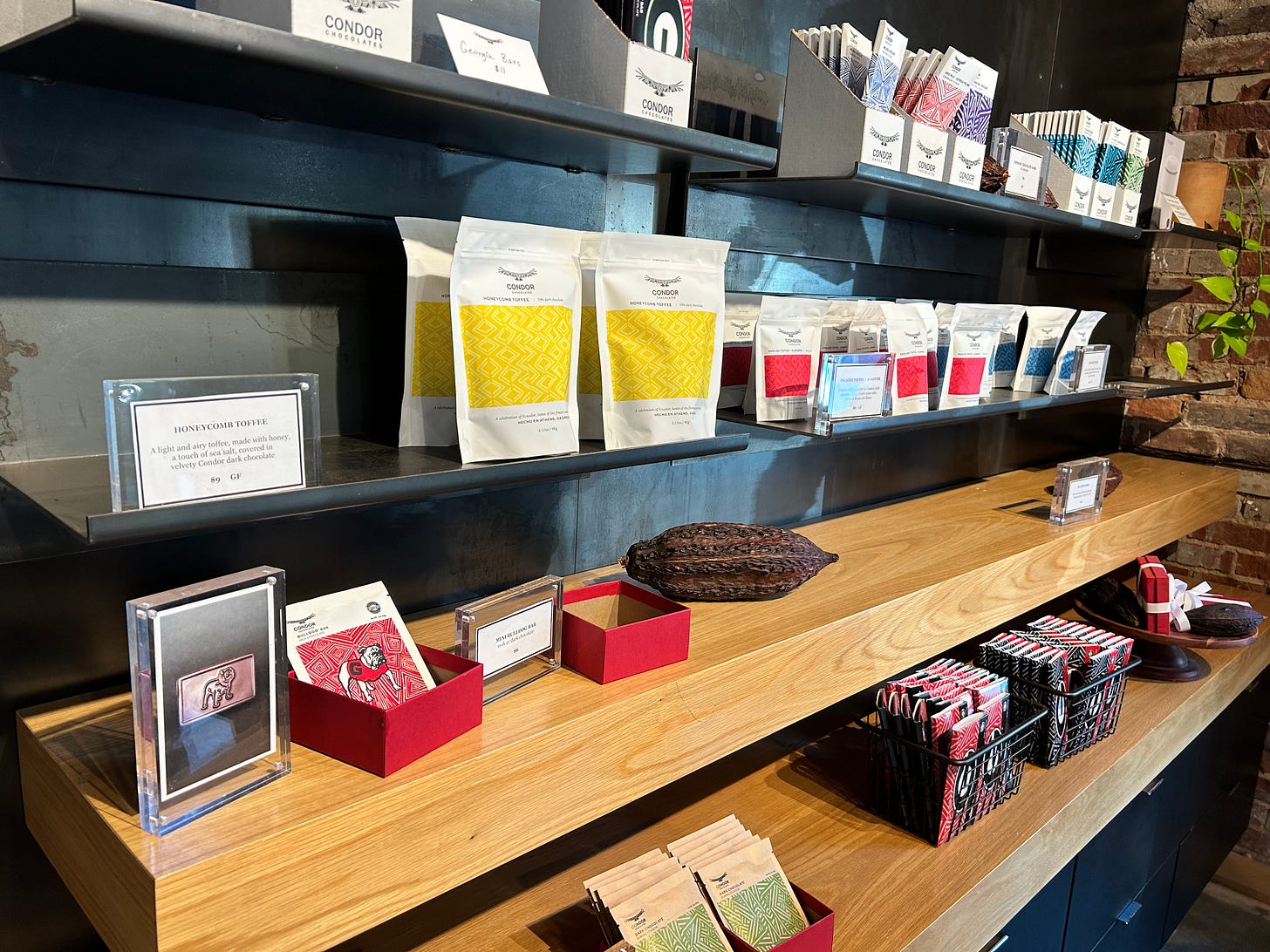
Cathy, this was fascinating! I'm with Tim, I'd like to know how you eat them. Also, how the average person could find enough of them to eat on a daily basis. Where does one get cocoa pods to eat the beans from?
I love the Dale brothers and really enjoyed reading their story. Thank you!